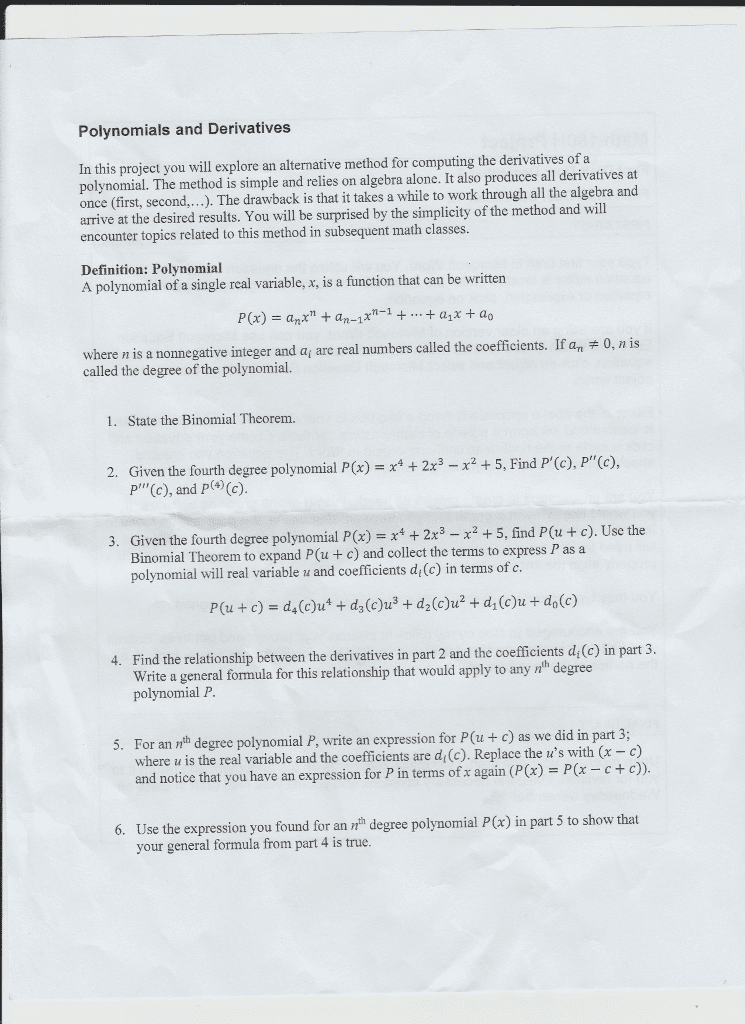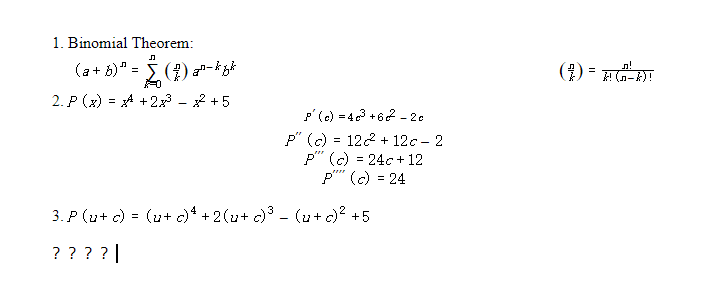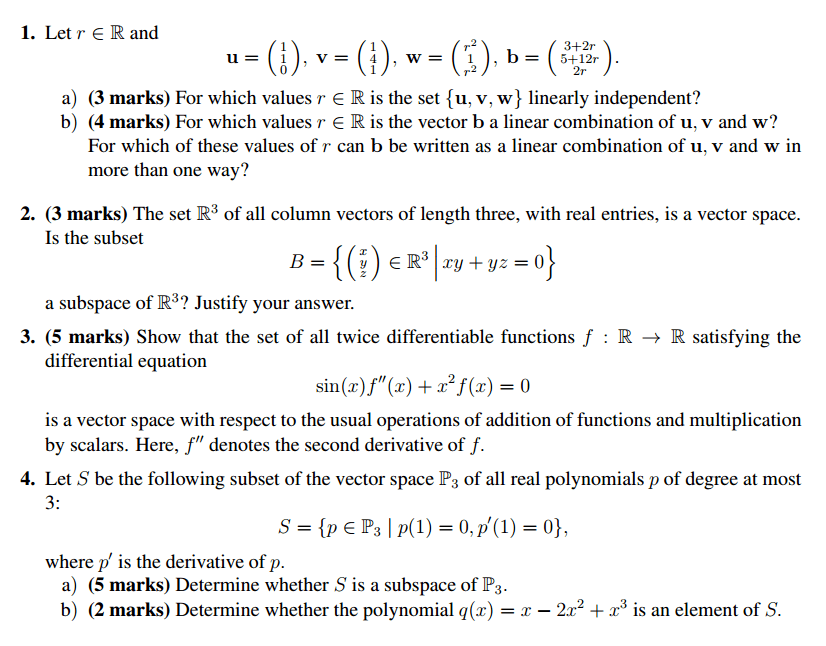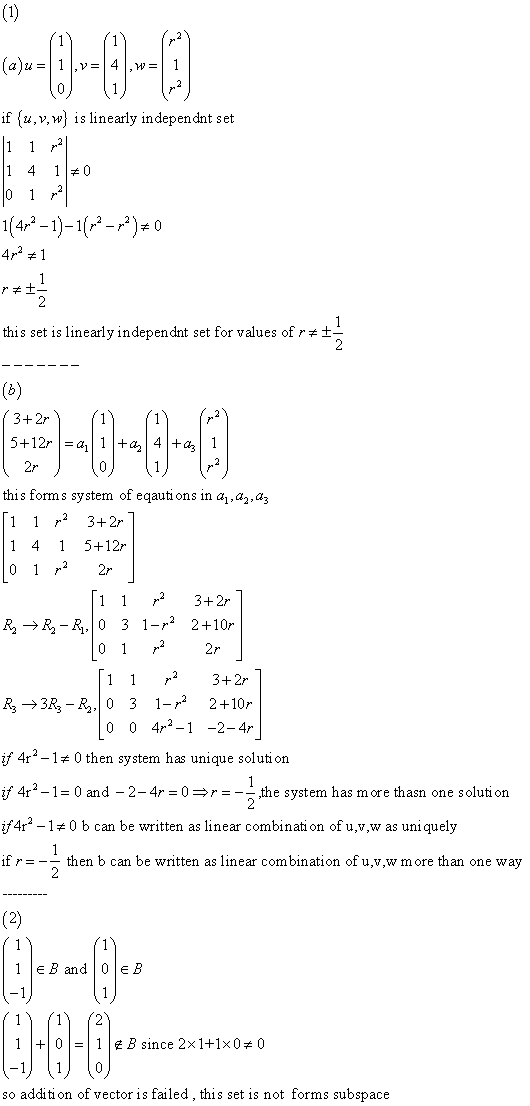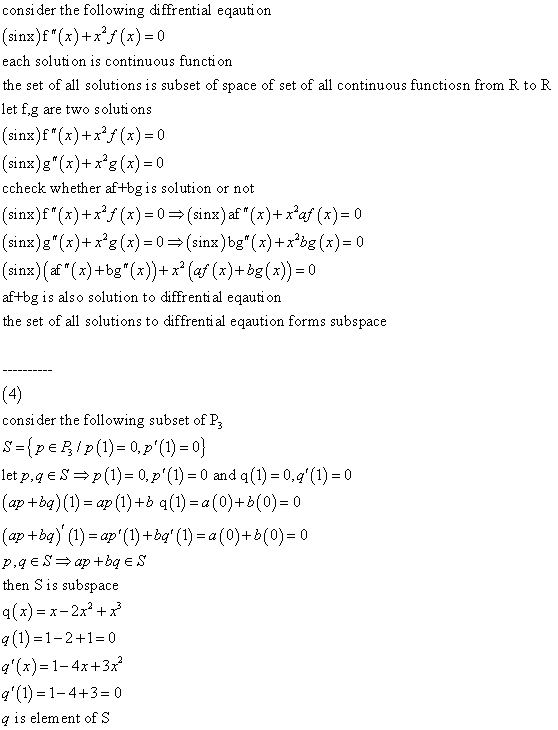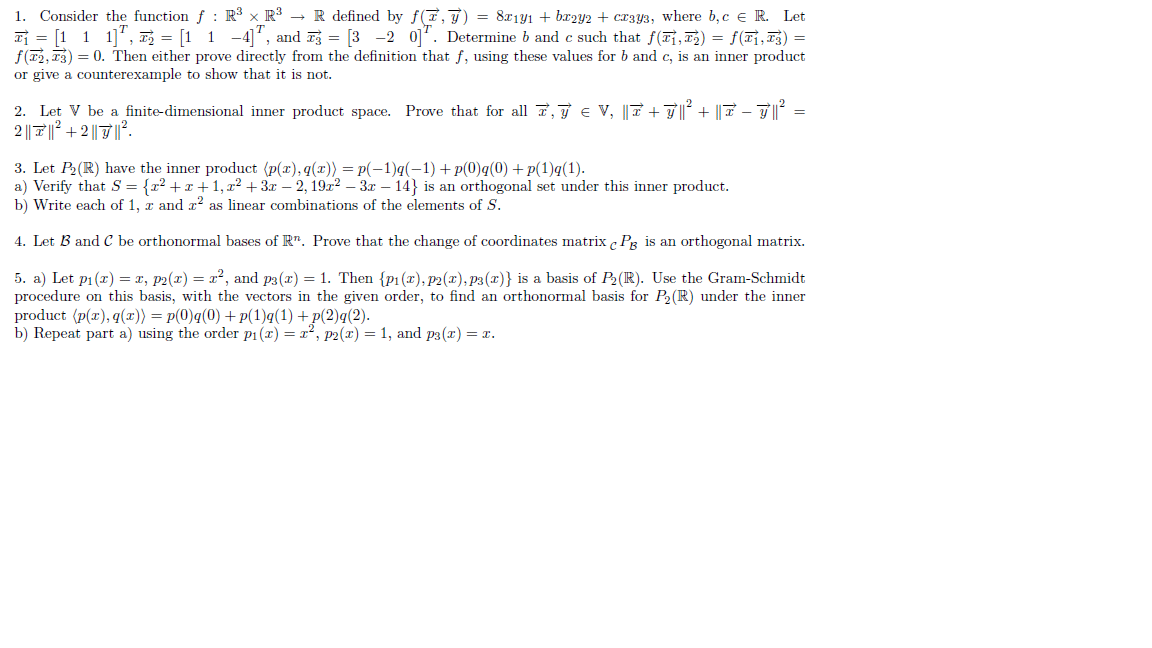MAT 21C Lecture Notes - Lecture 12: Binomial Series, Cartesian Coordinate System, Ellipse

MAT 21C – Lecture 12 – Binomial Expansion and Introduction to Vectors
• Binomial Expansion: Let f(x) = (1 + x)p ,f’x = p1 + xp-1, f’’x = pp – 1)(1 + x)p-2,
fn(x) = p(p – 1)(p – 2)…p – n + 1)(1 + x)p-n. Thus,
•
where c is between 0 and x. as
when The binomial series converges to .
• Example: When p = 2, we have . All other terms are 0.
When p = -1,
This is a geometric series with ratio, r = -x.
When p = ½, then
• Consider
Then
for some c between 0 and x. Thus,
• Example: Approximate
Applying the Taylor series for binomials with p = 1/2, we obtain
for some c between 0 and x. Then,
.
for
. In fact,
• To find error in Taylor Polynomial: . A Taylor polynomial
centered at a is
. Then
for some c
between a and x (a < c < x or x < c < a)
• Vectors will be introduced with coordinate systems in three dimensions and
Cartesian coordinates (x, y, z). A right-handed coordinate system is the default.
find more resources at oneclass.com
find more resources at oneclass.com

52
MAT 21C Full Course Notes
Verified Note
52 documents
Document Summary
Mat 21c lecture 12 binomial expansion and introduction to vectors. =(cid:2868: binomial expansion: let f(x) = (1 + x)p ,f"(cid:894)x(cid:895) = p(cid:894)1 + x(cid:895)p-1, f""(cid:894)x(cid:895) = p(cid:894)p 1)(1 + x)p-2, fn(x) = p(p 1)(p 2) (cid:894)p n + 1)(1 + x)p-n. Thus, (cid:4666)(cid:883)+(cid:1876)(cid:4667)= (cid:1876)=(cid:883)+ (cid:4666)(cid:2868)(cid:4667)! (cid:1876)+(cid:2869)(cid:2870)!(cid:4666) (cid:883)(cid:4667)(cid:1876)(cid:2870)+(cid:2869)(cid:2871)! (cid:4666) (cid:883)(cid:4667)(cid:4666) (cid:884)(cid:4667)(cid:1876)(cid:2871)+ (cid:4666)(cid:883)+(cid:1855)(cid:4667) (cid:2869) where c is between 0 and x. (cid:4666)(cid:1876)(cid:4667) (cid:882) as: (cid:4666)(cid:1876)(cid:4667)= (cid:4666) (cid:2869)(cid:4667) (cid:4666) (cid:4667) (cid:4666)+(cid:2869)(cid:4667)! The binomial series converges to (cid:4666)(cid:883)+(cid:1876)(cid:4667) if |(cid:1876)|


